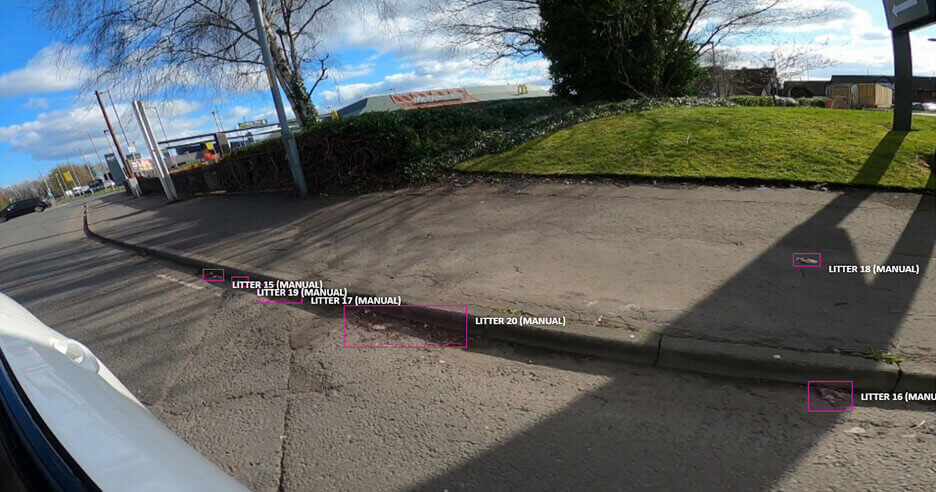Balancing Accuracy and Efficiency in Large-Scale Image Annotation with a Multifaceted Approach
We employed a team of 10 experienced annotators who specialized in working on the client-specified image annotation tool, CVAT. For precise object detection and labeling, our annotators used bounding box annotation and image segmentation techniques.

To address the project challenges and maintain consistency across all annotations, we implemented a strategic approach that involved:
Annotator Training
Given the diversity of target objects, we developed labeling protocols and provided 3-days training to our annotators, focusing on the specific urban elements and potential variations they might encounter. We also trained them to handle diverse image conditions and correctly identify litter amidst various urban clutter.
Integrated Client Feedback Cycle
We conducted weekly feedback sessions with the client to refine our annotation process. Additionally, we developed a dynamic workflow that allowed for quick adjustments based on client feedback.
Data Security and Quality Assurance
As data security was one of the client's primary concerns, we ensured intellectual property (IP) protection throughout the project. We adhered to strict non-disclosure agreements and employed robust security measures, including role-based access control and secure file sharing. To uphold accuracy and consistency across annotations, we implemented a human-in-the-loop approach. From defining attributes in the CVAT for automated labeling to verifying the accuracy of images labeled by the tool, we involved our subject matter experts at every stage. Each image underwent a three-tier review process: first by peer annotators, then by senior annotators, and finally by project managers who scrutinized the labeled data, ensuring it met the client's quality standards.